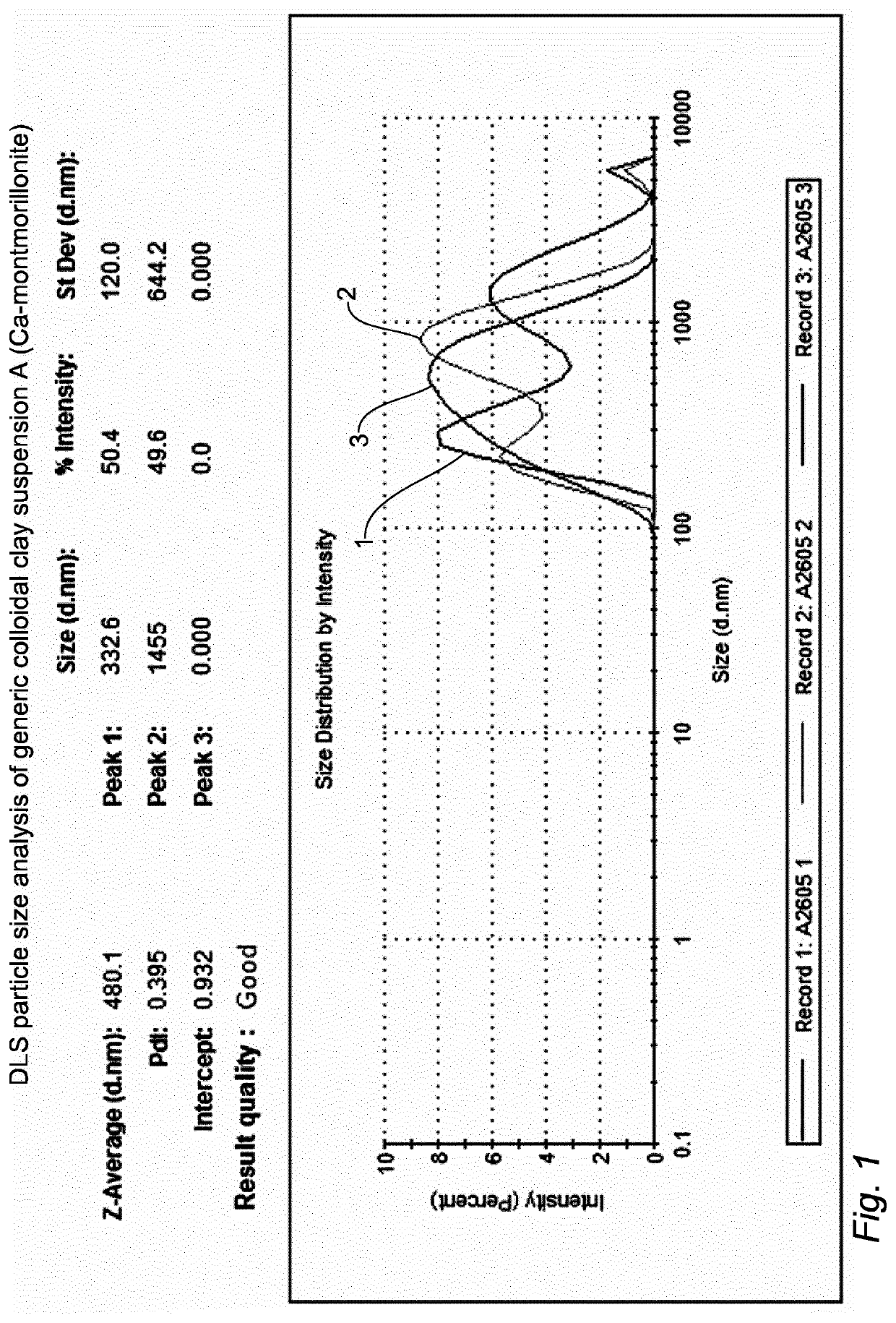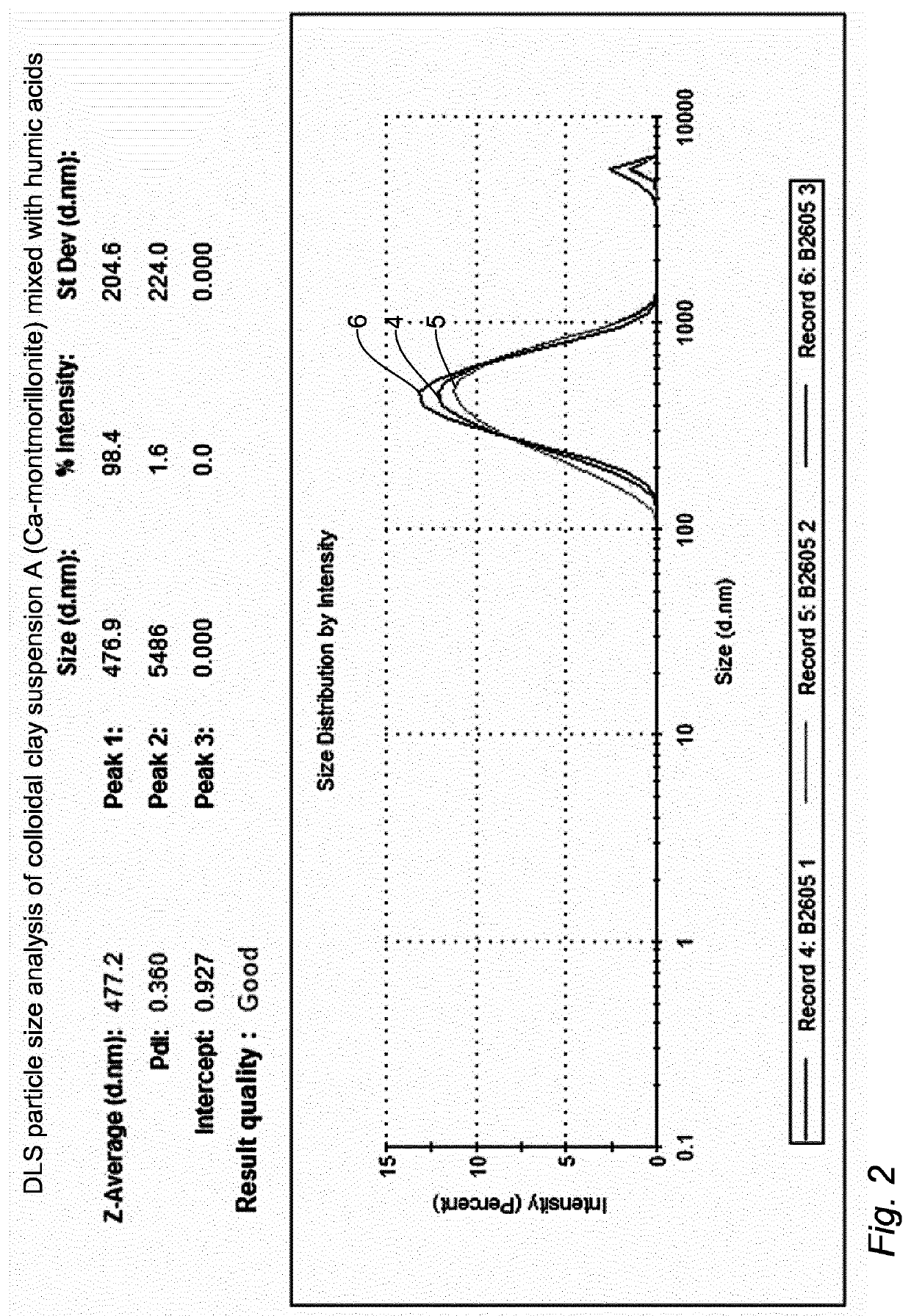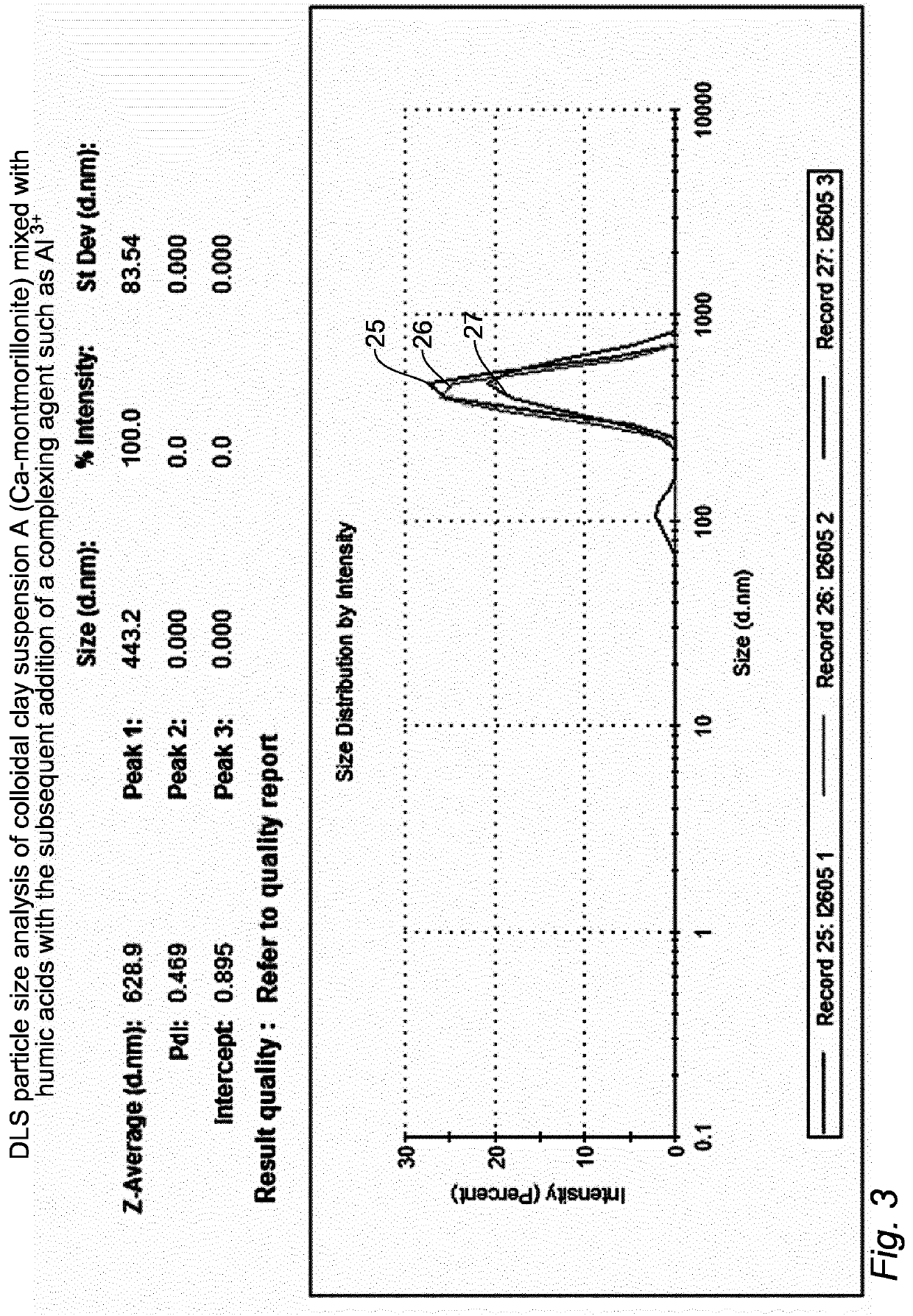Biodegradable hydrogel
- Summary
- Abstract
- Description
- Claims
- Application Information
AI Technical Summary
Benefits of technology
Problems solved by technology
Method used
Image
Examples
example 1
[0095]Preparation of a cross-linked organic-mineral polymer composite hydrogel (weight ratio polysaccharide / clay: 80 / 20, with addition of citric acid as auxiliary cross-linking element)
[0096]Chemical Solutions Employed, Description:
[0097][UM]. Humic acids solution (average molecular weight 50000 uma): 1 ml solution=0.065 g humic acids, concentration 1.28 10−6 M. Extracted from common pot-soil. pH adjusted to 7 with KOH and HCl solutions.
[0098][OM]. Suspension of organo-mineral complexes=20 ml solution [UM]+2 g Ca-Montmorillonite powder (common montmorillonite for enological uses). The clay is dispersed in [UM] with magnetic stirring (t 30′), and sonication (30′). The pH is adjusted to 9 with a KOH solution.
[0099][CMA]. Carboxymethyl cellulose (CMC) / Corn starch solution: 40 ml H2O, +0.6 g CMC sodium salt, +0.3 g of waxy corn starch (amylopectin). Solubilised at T=90° C. using a magnetic stirrer to facilitate the starch gelatinisation. pH adjusted to 9 using a KOH solution.
[0100][CA]....
example 2
[0111]Preparation of a Cross-Linked Organic-Mineral Polymer Composite Hydrogel (Weight Ratio Polysaccharide / Clay: 60 / 40, with Addition of Citric Acid as Auxiliary Cross-Linking Element)
[0112]Chemical Solutions Employed, Description:
[0113][UM]. Humic acids solution (average molecular weight 50000 uma): 1 ml solution=0.065 g humic acids, concentration 1.28 10−6 M. Extracted from common pot-soil. pH corrected to 7 with KOH and HCl solutions.
[0114][OM]. Suspension of organo-mineral complexes=3.3 ml solution [UM]+0.66 g Ca-Montmorillonite powder (common montmorillonite for enological uses)+15 ml distilled H2O. The clay is dispersed in humic acids with magnetic stirring (t 30′), and sonication (30′). The pH is adjusted to 9 with a KOH solution.
[0115][CMC]. Carboxymethyl cellulose (CMC) solution: 40 ml H2O, +1 g CMC sodium salt, solubilised at T=50° C. with magnetic stirring. pH adjusted to 9 using a KOH solution.
[0116][CA]. Citric acid solution: 0.525 g granular citric acid (for common en...
example 3
[0127]Preparation of a cross-linked organic-mineral polymer composite hydrogel with approximate composition: 71.4% montmorillonite clay, 21.4% natural polymer, 7% humic acid, 0.2% citric acid (weight ratio polysaccharide / clay: 25 / 75, cross-linking with citric acid, with addition of citric acid as auxiliary cross-linking element)
[0128]Chemical Solutions Employed, Description:
[0129][UM]. 5% Humic acids solution: 100 ml distilled water+5 g humic acids (humic acids salts—Sigma Aldrich).
[0130][CL]. 8% Clay suspension: 100 ml distilled water+8 gr. clay powder (common montmorillonite for enological uses).
[0131][CMC]. 2.5% Carboxymethyl cellulose solution: 100 ml distilled water, +2.5 g CMC (CMC sodium salt—Sigma Aldrich).
[0132][CA] Citric acid solution 0.1 M (21.0 gr / l) (citric acid monoidrate—Sigma aldrich).
[0133]Synthesis Description:
[0134]1. Mix the [UM] solution and [CL] suspension to obtain an organo-mineral suspension with a weight ratio humic acids / clay=0.10.
[0135]2. Mix the obtaine...
PUM
| Property | Measurement | Unit |
|---|---|---|
| Temperature | aaaaa | aaaaa |
| Temperature | aaaaa | aaaaa |
| Weight ratio | aaaaa | aaaaa |
Abstract
Description
Claims
Application Information
 Login to View More
Login to View More - R&D
- Intellectual Property
- Life Sciences
- Materials
- Tech Scout
- Unparalleled Data Quality
- Higher Quality Content
- 60% Fewer Hallucinations
Browse by: Latest US Patents, China's latest patents, Technical Efficacy Thesaurus, Application Domain, Technology Topic, Popular Technical Reports.
© 2025 PatSnap. All rights reserved.Legal|Privacy policy|Modern Slavery Act Transparency Statement|Sitemap|About US| Contact US: help@patsnap.com



